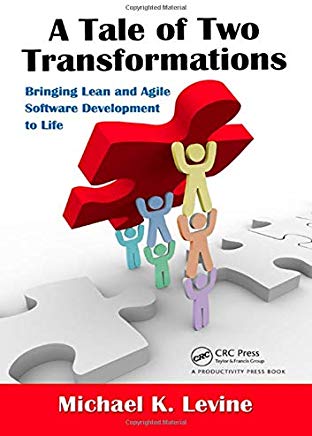How can my team / organization adopt lean and agile?
Once we have an understanding of what lean and agile development is, and why and when we need to use that approach, the next question is how do change our teams to adopt? I’ve helped many of my own teams make this transition and seen many more. From this experience and a study of theory and other results, I built the model of change presented here and fully elaborated upon in Tale of Two Transformations.
The first consideration is, what is the starting point? The diagram above shows the overall context. Today’s world could be a rigid waterfall environment, a chaotic environment, or anything in between. The challenge is converting today’s non-lean/agile people, processes, and tools to an appropriate lean and agile version. The change model then considers what needs to be changed in each triangle leg.
To the right is a chart for people and interactions changes, from a rigid waterfall environment to lean/agile regime. For example, managers need to transition from being taskmasters and controllers to being teachers and enablers. Governance needs to change from measuring process step completion to discussing substantive topics and see the system. We can build similar charts for Process and Tools, and from starting at Chaos or Waterfall.
With an understanding on what needs to change, the next question is how? I’ve constructed two models of change I call “People Driven” and “Drive People,” as shown in diagram at left. The first is an enablement approach focused on the people finding their own way with support and guidance; the other is a directive approached using mandated processes and tools. Both can work; both can work not-so-well. How to choose?
The final thing I’ll share on this topic are some ideas on how to choose the approach. In practice of course the approach will contain elements of both, but emphasis matters. The diagram at right gives the big picture. If current performance is poor, risk to business from disruption is low, leadership style is directive and they have expertise in lean/agile so they make good choices, then Drive People might be a good choice. On the other hand, if risk of disruption is high, a more People Driven approach might be a better fit.
For a full elaboration of these ideas on change check out Tale of Two Transformations. In the book I tell the story of two companies undergoing a transformation to agility, one of them from a rigidly waterfall environment, the other from a chaotic unstructured environment. The leaders are two of our heroes from Tale of Two Systems, Mary and Wes, who share experiences and learn and construct these models together.




